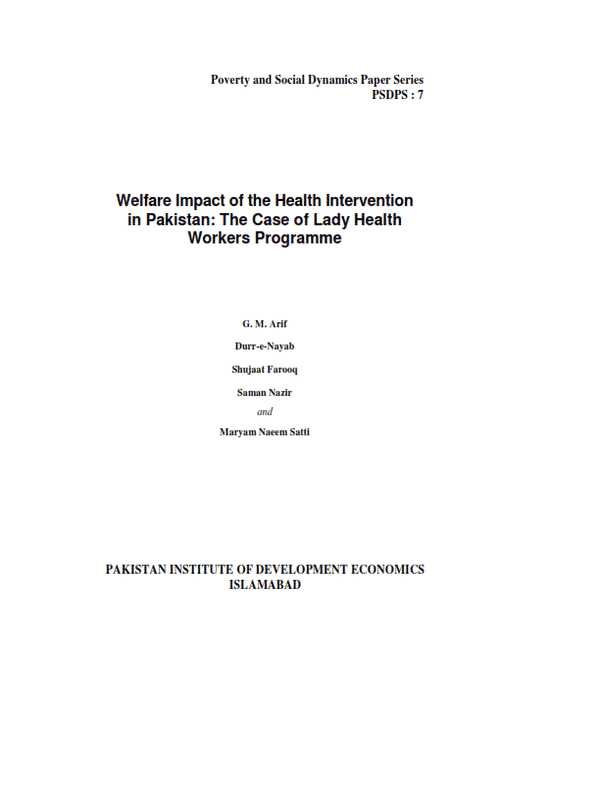
Pakistan Institute of Development Economics
- Home
Our Portals
MenuMenuMenuMenuMenuMenuMenu - ResearchMenuMenuMenuMenuMenuMenuMenu
- Discourse
- The PDR
- Our Researchers
- Academics
- Degree Verification
- Thesis Portal
- Our Portals
Welfare Impact of the Health Intervention in Pakistan: The Case of Lady Health Workers Programme
With the year 2015 fast approaching, Pakistan is unlikely to achieve most of the health targets set by the Millennium Development Goals (MDGs) [Government of Pakistan (2010)]. Among the key challenges it faces are high levels of child and maternal mortality. Accompanying the enhanced vulnerability of children and women is the economic divide—the poor face greater health challenges than the economically better off. Another divide is that between the rural and urban population—health facilities tend to be concentrated in the country’s urban centres. The enhanced burden of tackling health issues adversely affects the poor and rural population, lowering their productivity and limiting their lifetime achievements. Without substantially improved health outcomes, it is impossible to break out of the cycle of poverty [OECD (2003)]. The government of Pakistan has taken several initiatives to improve the health of its population, particularly among women and children; the Lady Health Workers Programme (LHWP) is one such initiative. Launched in 1994, its core objective was to help reduce poverty by providing essential primary healthcare services to the public and, hence, improve national health indicators. The programme also envisaged contributing to the overall health sector goals of improving maternal, neonatal, and child health, providing family planning services, and integrating other vertical health promotion programmes.



